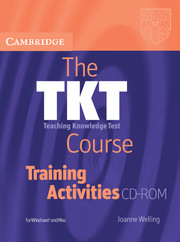3.8 - Feedback focus
Published online by Cambridge University Press: 09 February 2024
Summary
Instructions
1. Write the word feedback in the centre of the board. Ask trainees to say what feedback is (e.g. giving learners information about their learning) and why it is an important part of the learning process (e.g. it motivates learners, helps them understand their problems and makes them aware of how they can improve).
2. Develop a mind map like the one below by eliciting:
• what teachers give feedback on
• why they give feedback
• how teachers give feedback
3. Hand out the worksheet to each trainee. Explain that the trainees should categorise each of the eight examples of feedback in three ways:
1) What is the trainee giving feedback on?
2) Why is the feedback being given?
3) How is the feedback being given?
4. Have trainees work individually or in pairs.
5. Conduct feedback. Categorise the examples of feedback in the following three ways:
1. Draw a line between the example and the appropriate aspect (at the bottom of the page) to show what the teacher is giving feedback on.
2. Write the reason why the feedback is being given next to the example (encouraging, giving a grade, informing, recommending, praising etc.)
3. Circle the example in the appropriate colour according to how the feedback is being given:
• individual (teacher to student) = red
• group (teacher to class) = green
• peer (student to student) = blue
- Type
- Chapter
- Information
- The TKT Course Training Activities , pp. 84 - 85Publisher: Cambridge University PressFirst published in: 2024

